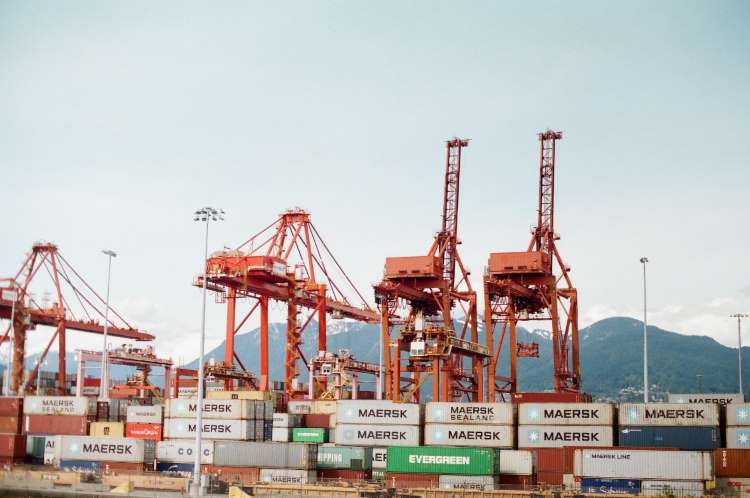
India’s push to expand its export base through free trade agreements (FTAs) has gained urgency in recent months. With global trade flows adjusting to new geopolitical alignments, New Delhi is trying to position itself as a preferred partner. But optimism over quick outcomes may be misplaced.
Finance Minister Nirmala Sitharaman recently expressed confidence in concluding FTAs with both the United States and the European Union. These are among India’s most ambitious trade negotiations, given the size of the markets and the complexity of the issues involved. That both deals have been under discussion for years points to the challenges ahead.
READ | India’s gaming industry needs smarter regulation
Promise without progress
The European Union is India’s largest trading partner in goods, with bilateral trade reaching €124 billion in 2023, or 12.2% of India’s total trade. Services trade between the two stood at €60 billion, a third of it in digital services. India, however, is only the EU’s ninth largest trading partner.
Talks with the EU have stalled repeatedly, primarily over India’s high tariffs on automobiles, alcoholic beverages, and other goods. Many of these tariffs exceed 100%. The EU also wants stronger enforcement of intellectual property rights and greater alignment with its regulatory frameworks, including new environmental standards like the Carbon Border Adjustment Mechanism (CBAM).
India, for its part, seeks easier access for pharmaceuticals, textiles, and IT services, and remains wary of opening its agricultural sector to subsidised European farm exports. The agreement has been described by European Commission President Ursula von der Leyen as potentially the largest of its kind, but that remains a long-term prospect rather than an imminent outcome.
Divergence on fundamentals
The India-US trade track presents a different set of obstacles. The US has long pressed for wider market access in agriculture, especially dairy and genetically modified crops. It has also sought changes in India’s approach to digital trade, such as opposing India’s insistence on data localisation. Washington also wants fewer restrictions on medical devices and stronger patent enforcement.
India’s list of concerns includes US tariffs on steel and auto components, as well as a demand for more flexibility on pharmaceutical exports. Negotiations have struggled to make headway, even as both sides express interest in closer commercial ties. The talks have dragged on since 2017, and the limited progress suggests that a comprehensive deal remains unlikely in the near term.
The issue has gained new urgency with the US set to resume reciprocal tariffs unless a deal is reached within a legally mandated pause period. India’s removal of seven tariff lines in the FY26 Budget was seen as a gesture, but not one sufficient to break the deadlock.
Gains without agreements
India’s push for trade deals comes at a time when global supply chains are being reconfigured, often to China’s disadvantage. Between 2017 and 2024, India is estimated to have captured around $38 billion worth of US exports that would otherwise have gone to China. This gain, occurring without any formal trade agreement, suggests that India’s attractiveness as an alternative supplier has grown organically.
That shift has benefited sectors such as textiles, electronics, auto components, and solar modules—areas that the government has targeted under the Make in India programme. The question is whether a full-fledged trade deal with the US would deliver enough additional benefits to justify the policy compromises it would require.
Lessons from recent FTAs
India has already signed FTAs with the UAE, Australia, and the four-member EFTA bloc. Negotiations with the United Kingdom have also concluded. These deals reflect a more assertive trade policy and a willingness to use FTAs as instruments for integration into global value chains.
However, the outcomes of these agreements remain to be assessed. Many of them involve phased tariff reductions that will take years to implement. In the case of the UK, India has committed to reducing tariffs on 90% of traded goods within a decade. The CBAM clause remains unresolved.
While these pacts may support India’s long-term export ambitions, they also lock in liberalisation that may not always be symmetrical. The policy challenge lies in ensuring that these agreements support domestic industrial objectives without exposing vulnerable sectors to premature competition.
Limited deals, limited risk
Trade experts increasingly favour pursuing limited agreements that focus on sectors with mutual benefit rather than aiming for sweeping FTAs. These “early harvest” deals could allow India to expand market access without surrendering regulatory control or exposing politically sensitive sectors.
The political economy of trade remains difficult. Agriculture, data privacy, and pharmaceuticals are areas where consensus is hard to build domestically, let alone with foreign partners. This makes wide-ranging trade agreements both economically complex and politically risky.
India’s trade diplomacy has grown more proactive, but structural obstacles remain. The EU and the US are not reluctant partners, but neither are they likely to make significant concessions in the short term. The notion that multiple FTAs will be concluded quickly may be more political messaging than realistic assessment.
New Delhi may still secure some deals. But success should not be defined by the number of agreements signed. It will be determined by whether India manages to gain market access without compromising on policy autonomy. That requires not just negotiation skill but also a clear sense of trade-offs—and the patience to see them through.
